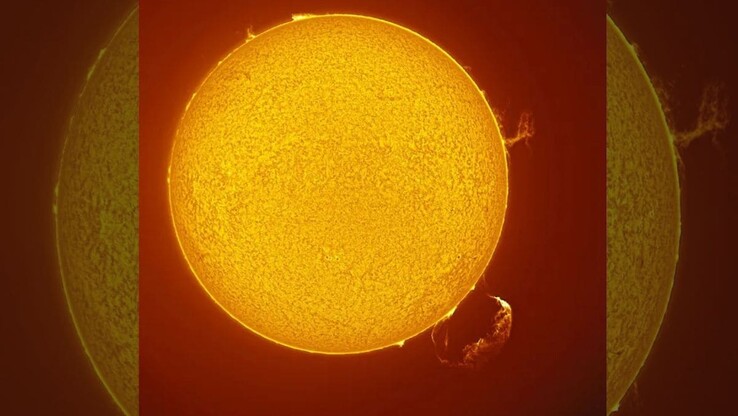The Sun is a star that never stops being active, regularly causing solar flares on its surface. And recently, a researcher managed to photograph an eruption whose size is equivalent to ten Earths, which shows the scale of the phenomenon.
It is important to know that the Sun has a cycle that lasts an average of 11.2 years. During this period, it goes from a weak magnetic activity to an intense one, causing an inversion of the magnetic poles.
And over the last few days, solar activity has been quite intense. Maximilian Teodorescu, a researcher at The Institute of Space Sciences in Romania, managed to immortalize a quite rare moment on 20 August. Indeed, using telescopes adapted for observing our star, he captured an image showing two extraordinary phenomena.
Thus, at the top right, it is possible to see a coronal mass ejection, caused by the perturbation of the magnetic field of the Sun. And if it seems small to you, know that it measures more than 130,000 km. In other words, this is the equivalent of more than 10 Earths stacked on top of each other. But that’s not all, because at the bottom right, another phenomenon has been immortalized, and it is a prominence that measures nearly 200,000 km wide.
The Sun still seems to have many surprises in store, whether in the form of solar flares or sunspots. And if you want to observe them in the coming days, it is necessary to equip yourself with suitable equipment with special filters in order to protect your eyes.
Source(s)
Techno-Science (in French)

































